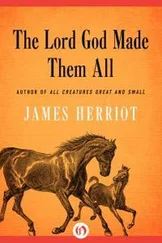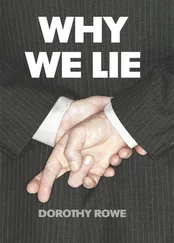“Where does the kibbutz get its water?”
“Modern artesian wells.”
This provided no clue, so Cullinane asked, “You think the original well may have been outside the town walls? Like Megiddo?”
“I don’t know what I think,” Tabari said cautiously. “But I don’t want you to fill up that wadi, because in a couple of years we may want to dig. Right down there.”
“Your Uncle Mahmoud is famous in the reports because he followed hunches. You want me to follow this one?”
“Koe-rect,” Tabari replied, and the dump was relocated.
Next morning Tabari distributed the small picks and hoes used by modern archaeologists—no shovel would be permitted at a respectable dig—and proceedings got off to a favorable start, principally because he followed another hunch. At Trench B in the northeastern sector he happened to see one of the kibbutzniks inspect an object and start to call a supervisor. On second thought the young man hesitated, as if he were going to place a small object in his pocket, keeping it for later sale. “Did you want me?” Tabari asked nonchalantly, walking up and holding out his hand.
“Yes,” the kibbutznik said. “I think I’ve found something,” and he handed Tabari a coin, which later occasioned much debate at the mess.
It had obviously been issued by some Arabic-speaking nation, but what it was doing on Makor was not so easy to determine. Cullinane argued, “It was found within a few inches of the top. It can’t signify the presence of an Arab town nobody ever heard of. Yet it looks quite old. Can you decipher it, Jemail?”
Tabari had read some of the Arabic script and was trying to untangle the rest when the photographer appeared with two books from the library showing the coins of Palestine, and after much checking back and forth proved that the coin had been issued some time around the year 1000 C.E.
“That’s hard to accept,” Cullinane protested. “That’s a hundred years before the Crusaders, and if what you say is right …” He hesitated, then used the classic complaint of the archaeologist: “That coin has no right to be there!” Later he told Tabari, “Everything would have been a lot simpler if you’d let that kibbutznik keep his damned coin and maybe sell it to some tourist in Akko. Warn your men not to dig up any facts that confuse the issue.”
But four days later the men at Trench B found something that was indeed bizarre, and when Cullinane finished his card he joked, “Tabari, somebody’s salting our dig.” This was a constant danger at an archaeological site: enthusiastic workmen, seeking to gain bonuses and also to please the foreigners whom in general they liked, were accustomed to hide things in the soil and then to come upon them triumphantly with their hoes; but cursory inspection of the new find satisfied even Cullinane that no workman could have procured this particular item for salting; it was made of gold.
The menorah, because it was so exclusively Jewish, occasioned much excitement both at the dig and at the kibbutz, but it was impossible to date, for the seven-branched candelabrum had been used by Jews at least since the days of Exodus, when God handed down detailed instructions as to how they should be made: “And six branches shall come out of the sides of it; three branches of the candlestick out of the one side, and three branches of the candlestick out of the other side.” The Lord had gone on and on, for apparently the menorah was an object of personal importance to Him.
“It’s a work of art,” Cullinane admitted grudgingly, “but of no archaeological value.” He pushed it away, unaware that it was to become the most notorious single object that would be found at the dig. “Damn,” he growled. “A bullet, a gold coin nearly a thousand years too old and a menorah. All in the wrong levels at the wrong times. What kind of dig is this?”
Three mornings later an event occurred which at the time he did not consider important: a journalist from Australia, a likable, breezy fellow, stopped by the dig and after asking many irrelevant questions happened to see the gold menorah. “What’s that?” he asked.
“It’s called a menorah,” Cullinane explained somewhat impatiently.
“This mean you’re going to find a lot of gold …”
“It’s much too recent to be of any archaeological value.”
“I understand, but even so, could I have a photograph of it?”
“I think we’d better not.”
“By the way, what is it?”
“A seven-branched candlestick,” Cullinane explained, and some days later, when time came to review what had gone wrong, he was able to recall two things that had happened at this point. The Australian had carefully counted each of the arms—“five, six, seven”—while a look of almost boyish pleasure came into his frank and appealing face.
“Dr. Cullinane, if I were careful to explain that this menorah, as you call it, had no historical significance, couldn’t I please have just one photograph?” And against his reasoned judgment, Cullinane gave permission. Quickly the Australian whipped out a Japanese camera and called for one of the older kibbutzniks to pose holding the candelabrum. “Look at it,” he ordered the man, and after a few whirlwind operations he thanked Cullinane and hurried back to the airport at Tel Aviv.
“I wish I had such energy,” Cullinane laughed, but he was diverted from further comment by Tabari, who came running from Trench B with a coin that had been dislodged from a crevice among some buried stones. It was so large that it must originally have been of considerable value, but when cleaned it turned out to be not a coin at all but a bronze seal.
It was a striking find, an authentic Crusader piece, and while it did not prove that Trench B was going to intercept the castle it did prove that at least one of the Volkmars had been on the tell. “I think we’re close to the castle,” Tabari said with quiet enthusiasm, and Cullinane sent Paul J. Zodman, his Chicago millionaire, a cable stating that positive identification of the ruins seemed near at hand.
Before Zodman could reply, a copy of a London paper reached Makor with news that shook the dig, and it was followed by papers from Rome, Paris and New York, repeating a lurid story about goings-on at the Makor dig. For the Australian had released with photographs an exciting yarn under the title “The Candlestick of Death,” relating how in Bible times an evil king had identified his seven principal enemies and of how he had lighted seven candles, instructing his general, “By the time the seventh candle burns out, my seven enemies are to be dead.” The first candle guttered down and the first enemy was beheaded. The sixth flickered away and the sixth enemy was gone. “But as the seventh candle trembled in the central cup, the general turned unexpectedly and lopped off the head of the king, for he was his own worst enemy. And then the general buried the hateful seven-branched candelabrum beneath the wall, where Dr. John Cullinane has so brilliantly found it, for it was a thing accursed.”
The main photograph showed a distinguished-looking elderly scholar recoiling from the menorah in horror. The caption read: “Dr. Gheorghe Moscowitz, renowned archaeologist, says, ‘This evil piece may well doom all who possess it, for it bears the curse of death.’”
Cullinane groaned and did something he rarely did. He swore. “Who in hell is Dr. Gheorghe Moscowitz?”
Tabari said, “He’s that nice old Rumanian who sweeps up.”
“Get him in here,” Cullinane snapped, but when the kibbutznik appeared, soft-spoken and apprehensive, Tabari took over.
“This you in the picture?”
“Dr. Cullinane was standing there when the man took it.”
Cullinane studied the picture and said, “I don’t remember you looking that way.”
Читать дальше

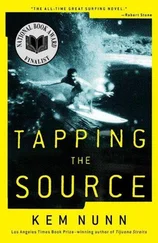


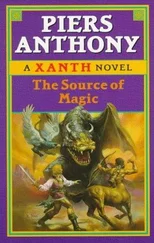
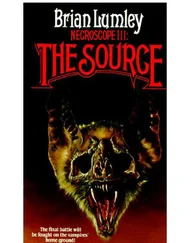
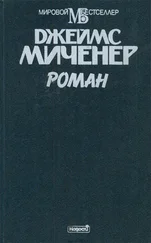

![Джеймс Купер - Пионеры, или У истоков Саскуиханны [The Pioneers, or The sources of the Susquehannah]](/books/395797/dzhejms-kuper-pionery-ili-u-istokov-saskuihanny-t-thumb.webp)
